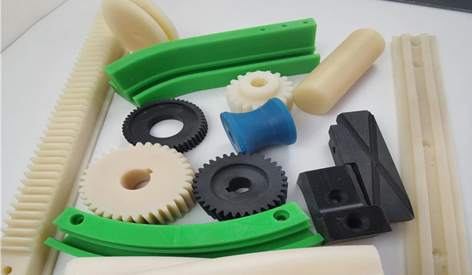Views: 3 Author: Site Editor Publish Time: 2024-04-19 Origin: Site









Introduction
Polytetrafluoroethylene (PTFE) turning is a critical process in precision engineering, offering unique challenges and opportunities. This technical article delves into the intricacies of PTFE turning, addressing concerns such as damage prevention, deformation control, and accuracy enhancement.
1. Understanding PTFE and Its Turning Properties
· Overview of PTFE's chemical composition, including its low friction coefficient and high resistance to chemicals and temperature.
· Challenges posed by PTFE's softness and tendency to deform under machining forces.
· Importance of selecting the right cutting tools and machining parameters for PTFE turning.
2. Damage Prevention Strategies
· Techniques for minimizing tool wear and preventing chip buildup during PTFE turning.
· Coolant selection and application methods to manage heat generation and avoid material damage.
· Use of specialized tool coatings and lubricants to enhance tool life and machining efficiency.
3. Deformation Control Measures
· Strategies for controlling PTFE's tendency to deform during turning operations.
· Workholding solutions to minimize part movement and vibration, ensuring dimensional stability.
· Optimizing cutting speeds and feeds to balance material removal rates with deformation risks.
4. Accuracy Enhancement Techniques
· Importance of tool geometry optimization for achieving precise PTFE components.
· Implementing proper tool paths and machining sequences to maintain dimensional accuracy.
· Quality inspection methods such as dimensional metrology and surface finish analysis for verifying part accuracy.
5. Advanced PTFE Turning Technologies
· Overview of advanced machining technologies like multi-axis CNC turning for complex PTFE components.
· Integration of CAD/CAM software for optimizing toolpaths and simulating machining processes.
· Future trends in PTFE turning, including the use of AI-driven machining algorithms and smart tooling systems.
6. Case Studies and Best Practices
· Real-world examples of successful PTFE turning applications in industries like aerospace, medical devices, and automotive.
· Best practices for tool selection, cutting parameter optimization, and quality assurance in PTFE machining.
· Collaborative approaches between manufacturers and material suppliers to address specific PTFE turning challenges.
Conclusion
PTFE turning presents both challenges and opportunities for precision manufacturers. By employing damage prevention strategies, deformation control measures, and accuracy enhancement techniques, engineers can unlock the full potential of PTFE as a versatile engineering material. Embracing advanced machining technologies and adhering to best practices ensures that PTFE turning delivers consistent, high-quality components for a wide range of critical applications.